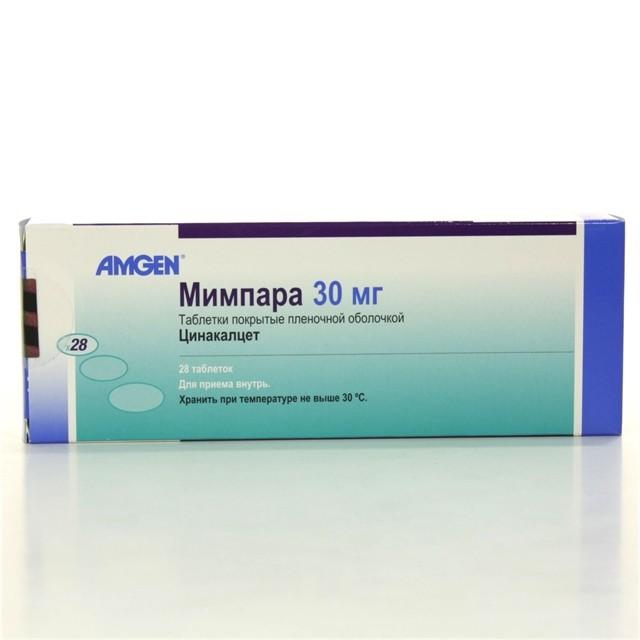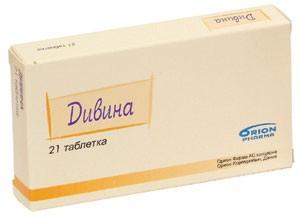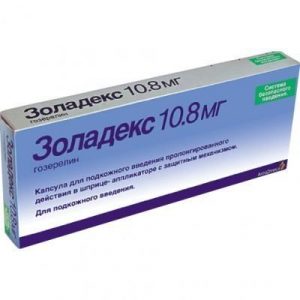Description
film-coated tablets
Packing
28 pcs.
Pharmacological action
Mimpara is a calcium mimetic that reduces the level of parathyroid hormone.
Pharmacodynamics
Calcium-sensitive receptors located on the surface of the main cells of the parathyroid gland are the main regulators of the secretion of parathyroid hormone (PTH). Zinacalcet has a calcimimetic effect that directly reduces the concentration of PTH, increasing the sensitivity of this receptor to extracellular calcium. A decrease in PTH concentration is accompanied by a decrease in serum calcium.
A decrease in PTH concentration correlates with cinacalcet concentration. Shortly after the administration of cynacalcet, the concentration of PTH begins to decrease, with the maximum decrease occurring approximately 2 6 hours after the dose, which corresponds to the maximum concentration of cinacalcet (Cmax). After this, the concentration of cinacalcet begins to decrease, and the concentration of PTH increases within 12 hours after the dose, and then the suppression of PTH remains at approximately the same level until the end of the daily interval with a dosing regimen of 1 time per day. The concentration of PTH in clinical studies of the drug Mimpara was measured at the end of the dosing interval.
After reaching equilibrium, the concentration of calcium in serum remains at a constant level throughout the interval between doses of the drug.
Secondary hyperparathyroidism
Three clinical trials lasting 6 months (double-blind, placebo-controlled) included patients with end-stage renal failure who are on dialysis, with an uncontrolled form of secondary hyperparathyroidism (1136 patients). The average initial concentration of intact parathyroid hormone (IPTG) in three clinical trials was 733 and 683 pg / ml (77.8 and 72.4 pmol / l) in the cynacalcet and placebo groups, respectively, 66% of patients took vitamin D before being included in the study , and> 90% took phosphate binding drugs. In patients taking cinacalcet, there was a significant decrease in the concentration of serum ipTG, calcium and phosphorus, calcium-phosphorus product (Ca P) compared with patients in the placebo group who received standard therapy. The decrease in the concentration of IPTG and Ca P was maintained during 12 months of therapy. Zinacalcet decreased the concentrations of ipTG, calcium and phosphorus and Ca P, regardless of the initial concentrations of ipTG or Ca P, the dialysis regimen (peritoneal dialysis compared to hemodialysis), the duration of the dialysis, and whether or not vitamin D.
was used. PTH was associated with a slight decrease in the concentration of markers of bone metabolism (specific bone alkaline phosphatase, N-telopeptides, bone renewal and bone fibrosis). When conducting a retrospective analysis of a pool of data collected from 6 and 12-month clinical trials using the Kaplan-Meier method, the rates of bone fractures and parathyroidectomies were lower in the cynacalcet group compared to the control group.
Preliminary patient studies, those suffering from chronic kidney disease (CKD) and secondary hyperparathyroidism who are not on dialysis indicate that cinacalcet reduced PTH concentrations in the same way as in patients diagnosed with end-stage renal failure (TSF) and secondary hyperparathyroidism undergoing dialysis. However, for patients with renal insufficiency in the pre-dialysis stage, efficacy, safety, optimal dosages and target therapy values have not been established. The study data showed that patients with CKD who are not on dialysis and receiving cynacalcet have a greater risk of developing hypocalcemia compared with dialysis patients with end-stage renal failure receiving cinacalcet, which may be due to a lower initial concentration of calcium and / or residual kidney function.
Parathyroid carcinoma and primary hyperparathyroidism (HPT)
During the main study, 46 patients (29 patients diagnosed with parathyroid carcinoma and 17 with primary HPT (in whom parathyroidectomy did not give results or are contraindicated) received cynacalcet up to 3 years (average 328 days for patients with parathyroid carcinoma and 347 days for patients with primary HPT.
Zinacalcet was used in doses from 30 mg 2 times a day to 90 mg 4 times a day. The main goal of therapy was to reduce the concentration of calcium in serum blood 1 1 mg / dl (0,2 0.25 mmol / L). In patients with parathyroid carcinoma, the average calcium concentration decreased from 14.1 to 12.4 mg / dl (3.5 3.1 mmol / L) ), while in patients with primary HPT, the serum calcium concentration decreased from 12.7 to 10.4 mg / dl (3.2 to 2, 6 mmol / l). Eighteen patients out of 29 (62%) with parathyroid carcinoma and 15 out of 17 patients (88%) with primary HPT achieved a decrease in serum calcium concentration of 1 mg / dL ( 0.25 mmol / L).
Pharmacokinetics of
After oral administration of the Mimpara preparation, the maximum concentration (Cmax) of cinnacalcet in blood plasma is reached after approximately 2 6 hours. The absolute bioavailability of cinnacalcet when taken on an empty stomach, established by comparing the results of various studies, was approximately 20 25%. Taking Mimpara along with food increased the bioavailability of cinacalcet by about 50 80%. A similar increase in the concentration of cinnacalcet in blood plasma was observed regardless of the fat content in food. The decrease in the concentration of cynacalcet occurs in two stages, the initial half-life is approximately 6 hours, the final half-life is 30 to 40 hours. The equilibrium state is reached within 7 days with minimal cumulation. The increase in the area under the curve concentration-time (AUC) and Cmax of cinacalcet occurs almost linearly in the dosage range of 30 180 mg once a day. At dosages above 200 mg, absorption is saturated, probably due to poor solubility. The pharmacokinetic parameters of cinnacalcet do not change with time. There is a high volume of distribution (approximately 1000 L), which indicates an extensive distribution. Zinacalcet is approximately 97% bound to plasma proteins and is distributed at a minimum level in red blood cells. Zinacalcet is metabolized by microsomal liver enzymes, mainly CYP3A4 and CYP1A2 (the role of CYP1A2 has not been confirmed by clinical methods). The main circulating metabolites are inactive. According to in vitro studies, cinacalcet is a potent inhibitor of CYP2D6, however, at concentrations achieved under clinical conditions, cinacalcet does not inhibit the activity of other CYP enzymes, including CYP1A2, CYP2C8, CYP2C9, CYP2C19 and CYP3A4, and is also not an inducer of CYP1A2, CYP2C19 and CYP3A4. After administering to healthy volunteers 75 mg of the radiolabelled dose, cynacalcet underwent a rapid and significant oxidative metabolism followed by conjugation. Excretion of radioactivity occurred mainly as a result of excretion of metabolites through the kidneys. Approximately 80% of the administered dose was found in urine and 15% in feces.
Elderly: There are no clinically significant differences associated with the age of the patients in the pharmacokinetics of cinacalcet.
Renal failure: the pharmacokinetic profile of cynacalcet in renal failure of mild, moderate and severe degrees, and in hemodialysis or peritoneal dialysis, is comparable to the pharmacokinetic profile of the drug in healthy volunteers.
Hepatic insufficiency: mild hepatic insufficiency does not significantly affect the pharmacokinetics of cinnacalcet. Compared to the group with normal liver function, the average AUC of cinacalcet was approximately 2 times higher in the group with moderate impaired liver function, and approximately 4 times higher in severe liver failure. The average elimination half-life of cynacalcet in patients with moderate and severe degrees of liver failure is prolonged by 33 and 70%, respectively. Hepatic insufficiency does not affect the degree of binding of cinnacalcet to proteins. Since the selection of doses is based on the parameters of efficacy and safety, for patients with hepatic insufficiency, it is not necessary to carry out additional dose adjustment (see sections “Method of application and dose”, “Special instructions”).
Gender: Cinacalcet clearance may be lower in women than in men. Since the selection of doses is carried out individually, it is not required to carry out additional dose adjustment depending on the patient’s gender.
Children: The pharmacokinetics of cinacalcet was studied in 12 children (6-17 years old) with CKD on dialysis after a single oral administration of 15 mg. The average values of AUC and Cmax (23.5 (range from 7.22 to 77.2) ng · h / ml and 7.26 (range from 1.80 to 17.4) ng / ml, respectively) were in the range of approximately 30% of the average values of AUC and Cmax, observed in one study in healthy adults after a single oral administration of 30 mg of the drug (33.6 (range from 4.75 to 66.9) ng · h / ml and 5.42 (range from 1.41 to 12.7) ng / ml, respectively). Due to limited data in children, a potentially more pronounced exposure of a certain dose of cynacalcet to younger children with lower body weight is not excluded compared to older children with higher body weight. The pharmacokinetics of repeated doses in children has not been studied.
Smoking: Cinacalcet clearance is higher in smokers than in non-smokers. Apparently, this is due to the induction of metabolism, which takes place with the participation of CYP1A2. If the patient stops or begins to smoke during therapy, the plasma concentration of cinacalcet may change and a dose adjustment may be required.
Preclinical safety studies
Preclinical studies did not reveal any genotoxic or carcinogenic potential of cynacalcet. The safe range, according to toxicological studies, is quite narrow, since in experiments on animals, the limiting dose was hypocalcemia. The development of cataracts and lens opacities were observed during toxicological and carcinogenic studies in rodents with multiple doses. However, such phenomena were not observed in experiments on dogs or monkeys, or during clinical trials where monitoring was carried out regarding the formation of cataracts. It is known that in rodents cataracts can occur as a result of hypocalcemia.
Indications
Secondary hyperparathyroidism in dialysis patients with end-stage renal failure, including as part of combination therapy, including drugs that bind phosphates and / or vitamin D, decrease in hypercalcemia in patients with parathyroid carcinoma.
Contraindications
Children under 18 years of age (efficacy and safety not studied) hypersensitivity to the drug.
Use during pregnancy and lactation
There are no clinical data on the use of cinnacalcet during pregnancy. As preclinical studies in rabbits have shown, cynacalcet crosses the placental barrier. In animal experiments, there was no direct negative effect on the course of pregnancy, childbirth or postnatal development. Neither the embryotoxic nor teratogenic effects were detected during experiments on pregnant female rats and rabbits, with the exception of reducing the weight of fetuses in rats when using doses, toxic to pregnant females. During pregnancy, the Mimpara drug should be used only in cases where the potential benefit justifies the potential risk to the fetus.
To date, the possibility of ingestion of cinacalcet in the milk of a nursing woman has not been studied. Zinacalcet is found in milk of lactating rats, with a high ratio of levels in milk to plasma levels. After a thorough assessment of the risk / benefit ratio, a decision should be made to stop breastfeeding or taking Mimpara.
Composition
1 tablet contains:
Active ingredient: cinacalcetate hydrochloride
Excipients: corn starch pregelatinized MCC povidone crospovidone magnesium silicon stearate dioxide colloidal wax monohydrate 40%, 50% monohydrate – 15% polycarbonyl nitrate, 15% oparate, 19.38%, triacetin – 8%, indigo carmine aluminum varnish – 2.78%, iron oxide yellow – 1.84%) transparent opadray (hypromellose 6cP – 90.9%, macrogol 400 – 9.1%).
Side effects of
Secondary hyperparathyroidism
In controlled clinical trials, data were obtained in 656 patients taking Mimpara and 470 patients taking placebo for up to 6 months. Nausea (31% in the cinacalcet group 19% in the placebo group) and vomiting (27% in the cinacalcet group 15% in the placebo group) were most often observed. Nausea and vomiting were mild to moderate and in most cases were short-lived. Discontinuation of therapy due to the development of undesirable effects was mainly caused by nausea (1% in the placebo group 5% in the cynacalcet group) and vomiting (
Adverse reactions associated with the use of cynacalcet and more common in the Mimpara group compared with the placebo group in double-blind clinical trials are shown below in the following sequence: very often (> 1/10) often (> 1 / 100.1 / 1000.1 / 10 000,
From the digestive system: very often – nausea, vomiting often – anorexia sometimes – dyspepsia, diarrhea .
From the side of the central nervous system and peripheral nervous system: often – dizziness, paresthesia sometimes – convulsions.
From the musculoskeletal system: often – myalgia.
From the endocrine system: often – a decrease in testosterone levels.
Dermatological reactions: often a rash.
Allergic reactions: sometimes – hypersensitivity reactions.
Other: often – asthenia, hypocalcemia.
Parathyroid carcinoma and primary hyperparathyroidism
Mimpara’s safety profile in this group of patients is generally consistent with the pattern observed in patients with chronic kidney disease. The most common side effects were nausea and vomiting.
Post-marketing observation
When using Mimpara in routine practice, the following adverse reactions were established, the frequency of which cannot be estimated on the basis of the available data:
– in patients with heart failure and taking cynacalcet, individual idiosyncratic cases of lowering blood pressure and / or worsening heart failure
were recorded – allergic reactions, including angioedema and urticaria.
Drug Interaction
Effect of Other Medicines on Cinacalcet
Cinacalcet is partially metabolized by the CYP3A4 enzyme. Concomitant administration of 200 mg of ketoconazole 2 times a day (a pronounced CYP3A4 inhibitor) resulted in an increase in the levels of cinacalcet approximately 2-fold. A dose adjustment of Mimpar may be required if a patient begins or stops taking a potent inhibitor (such as ketoconazole, itraconazole, telithromycin, voriconazole, ritonavir) or inducers of the enzyme’s activity.
Data from in vitro experiments indicate that cinacalcet is partially metabolized by the CYP1A2 enzyme. Smoking stimulates CYP1A2 activity, it was noted that clearance of cinacalcet is 36 38% higher in smokers than in non-smokers. The effect of CYP1A2 inhibitors (fluvoxamine, ciprofloxacin) on plasma levels of cinacalcet has not been studied. Dose adjustments may be required if the patient starts or stops smoking during therapy with Mimpara, or starts or stops concomitant administration of potent CYP1A2 inhibitors.
Calcium carbonate: co-administration of calcium carbonate (single dose of 1500 mg) did not alter the pharmacokinetics of cinacalcet.
Sevelamer: co-administration of sevelamer (2400 mg 3 times daily) did not affect the pharmacokinetics of cinacalcet.
Pantoprazole: the co-administration of pantoprazole (80 mg once daily) did not alter the pharmacokinetics of cinacalcet.
Effect of cinacalcet on other medicines
Medicines metabolised by the enzyme P450 2D6 (CYP2D6): Cinacalcet is a potent inhibitor of CYP2D6. Dose adjustments may be required when co-administered with Mimpar if such agents are predominantly metabolised by CYP2D6, have a narrow therapeutic index, and require individual dose selection.
Desipramine: co-administration of 90 mg cinacalcet once daily with 50 mg desipramine, a tricyclic antidepressant, predominantly metabolised by CYP2D6, significantly (3.6 times) increased the level of desipramine exposure in patients with active CYP2D metabolism.
Warfarin: Repeated oral administration of cinacalcet did not affect the pharmacokinetics or pharmacodynamics of warfarin (PV and VII coagulation factors were measured).
The lack of effect of cinacalcet on the pharmacokinetics of R- and S-warfarin and the absence of auto-induction of enzymes in patients after multiple dosing indicates that cinacalcet is not an inducer of CYP3A4, CYP1A2 or CYP2C9 in humans.
Overdose
Symptoms: hypocalcaemia in the case of overdose in patients should monitor the symptoms and signs of hypocalcemia.
Treatment: symptomatic and supportive therapy. Because the degree of binding of cinacalcet to proteins is high, hemodialysis is not an effective therapeutic method for overdose.
Doses titrated up to 300 mg (once a day) are safe for patients on dialysis.
Storage conditions
At a temperature not exceeding 30 ° C.
The Expiration of
is 4 years.
Deystvuyuschee substances
Tsynakaltset
Terms of delivery pharmacy
Prescription
dosage form ma
Formulation
Menyufekchuring Amgen Limited, USA




